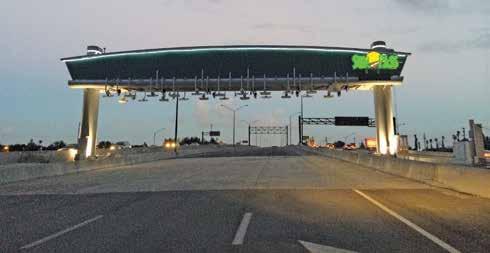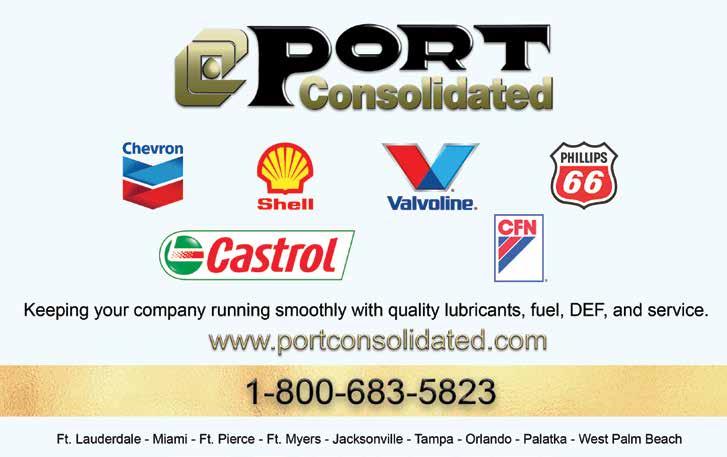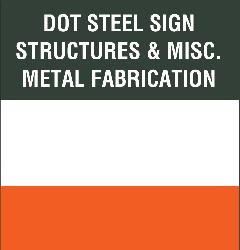
6 minute read
Managing Worker Fatigue in a VUCA World: Volatility, Uncertainty, Complexity And Ambiguity Shroud The Industry
Managing Worker Fatigue in a VUCA World
BY HAL RABBINO AND JEFFREY BRADSHAW JMJ ASSOCIATES
The transportation industry has faced many challenges for a long time. Highway safety issues, weather challenges, new regula tions, driver training and licensing, and worker fatigue are just a few. These challenges have emerged in a relatively stable environment in which fluctuating demand, demographics and new logis tics technologies and practices have been taken on by industry leaders.
The sudden emergence of COVID-19 created deepening and unprecedented challenges for all, including the transportation industry, particularly in Florida, with Gov. Ron DeSantis asking the FDOT to speed road building projects in the state. Today we are operating in a VUCA world of Volatility, Uncertainty, Complexity and Ambiguity. VUCA in the transportation world means:
Volatile: Unreasonable demands across the supply chain.
Uncertain: Drivers and workers facing additional stress, worrying about their families and their own exposure and health.
Complex: Supply chain interconnectedness causing rapid course corrections due to unprecedented disruptions and uncertain response times from suppliers.
Ambiguous: Inconsistent and/or unclear policy changes from government and business heightening the likelihood of miscommunication.
As a backbone of the U.S. economy, the transportation industry is a key strategic partner in responding to the massive public health challenges America currently faces. At the time of this writing, we are still unclear of COVID-19’s long-term impact on public health, but we do know that deliveries of food, medical and other critical supplies across the nation will remain urgent, with a chance that the virus will pick up again in the fall. Additionally, as the industry resets for the future after this crisis, that future will be different, too.
To keep the supply chain moving, we have seen driver fatigue heightened even further. Many trucking companies already use a plethora of Internet of Things fatigue-monitoring technologies to help guard against fatigue, such as GPS trackers, hours of service electronic logging devices, IoT data analyses systems, and endless smartphone apps marketed to help monitor and minimize driver fatigue.
Many such systems are in place with transportation building firms. Rather than relying on these types of systems, a total worker health approach can help organizations better understand the fuller context in which our workers make key decisions that affect delivery and safety performance.
There is a need to expand our conversations about worker safety beyond the office or the job site to include the care of our workers 24/7. A more holistic, humancentric view of our workers’ safety and our leadership is needed now and in the future.
As enterprise leaders, we need to ask ourselves a question – how will we balance the critical needs of the nation, while still ensuring the health and well-being of our workers who keep the transportation industry functioning?
One way is to consider why and how we handle problems. Why is it that, despite our best efforts, worker fatigue is still a major challenge? Why do our technical fixes only work some of the time? What are we missing? We assert that if we do not take the whole person into account, we will miss critical opportunities to act as leaders. We suggest looking at these challenges from a different perspective.
Harvard professor and author Ronald Heifetz suggests that leaders need to consider and effectively address three types of problems, categorized as either Technical or Adaptive challenges:
Type I: Technical problems that can be solved within the existing repertoire of tools, skills or behaviors. The problem has a “fix” and there is somebody available who knows how to apply it. (A patient has a broken arm, the doctor diagnoses the problem, sets the bone, and applies a cast. Problem solved.) The weight of problem solving is on the technical expert, rather than the patient.
Type II: The problem is definable, but no clear-cut solution is available. Or, there might be a solution available, but it is unknown whether it will work. In this case, the one with the problem must create the solution.
Worker fatigue is a Type II problem. Management might have some ideas about what must be done, but ultimately, the worker must change his/her lifestyle; sleeping habits, diet, exercise, stress regulation, and so on. There are some Type I (mechanical) solutions, but ultimate success depends on an adaptive change by the one with the problem.
Type III: The problem is not clear-cut, and technical fixes are not readily available. In this case, the leader must induce learning so that the problem can be defined and broken down into both Technical (Type I) and Adaptive (Type II) solutions. 1
More of our leadership time, effort and skill needs to be dedicated to addressing Type II problems. Strong leaders will be mindful of four potential obstacles in developing successful solutions to Type II, Adaptive challenges.
The first obstacle is knowing how to identify an Adaptive challenge versus a Technical one. A problem is likely Adaptive if it: 1. Returns after being solved one or more times; 2. Challenges the “way we do things here”; 3. Generates internal reporting data reflecting performance of one group that may upset another. (Example, management is responsible for safety results and workers for safety performance); and 4. Written policies are very clear, yet not always followed.
Second, once the Adaptive problem is identified, we often miss important participants who must be included in developing the solution. Ask yourself, how often are your workers included, in any meaningful way, in the writing or modification of safety policies that directly impact them? Those impacted by the problem need to be part of the team generating the solution, otherwise it is unlikely to be adopted or accepted.
Third, we as leaders often trust that once a solution is developed, the problem will disappear or be taken care of quickly. For technical challenges, this is usually true. For example, apply a new technology for ensuring something is done faster and more efficiently and, after appropriate training, the new technology sticks. Sadly, this is rarely the case for adaptive challenges. They require learning how to solve and resolve for different aspects of the challenge until the new way of working is deeply accepted and embedded in the employee culture.
Fourth and final, as enterprise leaders, we are responsible for writing and implementing the policies and procedures that our employees are supposed to follow. In stable times, we spend a lot of time here.
In a VUCA world, taking on Adaptive challenges, such as worker fatigue, and understanding why and how we go after them will determine our ability to emerge thriving from these critical times. Now, more than ever, we need to focus our attention and skills on the cultural, Adaptive challenges of keeping people safe.
Summary
The ability of leaders to address Adaptive challenges is an imperative in today’s VUCA world. The associated organizational uncertainties require leaders that encourage inclusive teams to iterate, test and address the complexities of Adaptive problems.
Patience and permission to learn in a safe-to-fail culture will anchor new thinking and new ways of working. Making it a priority to address head-on Adaptive challenges will enable organizations to thrive and competitively survive, while keeping employees and their families safe and healthy.
In summary, four things leaders must do in a VUCA world: 1. Know the type of problem you are facing. 2. Build inclusive teams to address prob lems. 3. Foster a safe-to-fail learning culture to ensure adoption. 4. Make it a priority to not dismiss, but embrace adaptive challenges in this
VUCA time.
Reference
1. Adapted from Leadership Without Easy Answers, Ronald Heifetz, Pages 73-76.
Hal Rabbino Hal Rabbino and Jeffrey Bradshaw are part of the consulting solutions team at JMJ, an international company that focuses on safety products and services in hazardous industries. They can be reached at (512) 485-5061.
Jeffrey Bradshaw
FLORIDA COMPANIES TO WATCH 2015 AWARDEE

AWS CERTIFIED WELDING FABRICATOR
AISC CERTIFIED STEEL FABRICATION FACILITY
DOT STEEL SIGN STRUCTURES & MISC. METAL FABRICATION












